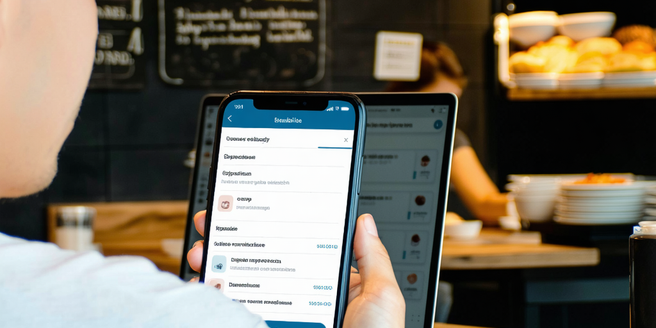Participating In App Testing

Understanding the Importance of App Testing
| Feature | Importance | Outcome |
| Usability | Ensures smooth user experience | Higher user retention |
| Functionality | Ensures features work as intended | User satisfaction |
| Performance | Ensures app responds quickly | Increased efficiency |
| Security | Protects user data | Trust and compliance |
| Compatibility | Ensures app works on all devices | Wider audience reach |
| Reliability | Ensures app stability | Consistent user experience |
Types of App Testing: A Brief Overview
App testing is varied with several types serving different purposes. First is functional testing, which ensures the app functions as expected. This is crucial for a positive user experience. Then there is performance testing, which evaluates the app’s speed and responsiveness. A well-performing app can significantly enhance user satisfaction and retention. Security testing is also key, as it identifies vulnerabilities to protect user data. In an age where data breaches are common, safeguarding user information is more important than ever. Usability testing focuses on user friendliness, ensuring the app is easy to navigate. Compatibility testing ensures the app works across different devices and operating systems. Lastly, regression testing checks that new updates do not disrupt existing functionalities.
Getting Started: How to Become an App Tester
Becoming an app tester involves a few simple steps. Start by gaining basic knowledge in software and app development. Many free online courses can provide a foundation in testing principles. Networking within the tech community can open doors to testing opportunities. Attending tech meetups can also be a great way to meet industry professionals. Staying updated with the latest trends in app development will give you an edge in the industry. Building a portfolio showcasing your understanding of different apps and testing methodologies is beneficial. Consider starting with beta testing platforms, which connect testers with real apps. As you gain experience, focusing on specific types of testing, like automation, can enhance your skills. Developing strong communication skills for writing detailed feedback reports is also vital for success.
Essential Tools for Effective App Testing
The right tools can enhance app testing effectiveness. Automation tools like Selenium and Appium are widely used for running repetitive tests efficiently. For bug tracking, tools such as JIRA or Bugzilla help manage and report issues. It’s essential to choose the right tools based on your specific testing needs. Moreover, constantly updating your testing tools can lead to improved testing results. Use performance testing tools like Apache JMeter to evaluate app speed and stability. Security tools, such as OWASP ZAP, are vital for identifying potential vulnerabilities. For usability testing, tools like UserTesting provide insights into user interactions. Cross-browser testing tools such as BrowserStack ensure compatibility across platforms. Leveraging these tools can streamline the testing process and ensure thorough testing coverage.
The Role of Feedback in App Testing
Feedback is a cornerstone of effective app testing. It provides developers with critical insights into how an app performs under different conditions and meets user expectations. Detailed feedback identifies areas of improvement, such as bugs, performance lags, or usability issues. Additionally, sharing feedback across teams fosters a collaborative environment for app development. Constructive feedback can also highlight what works well, guiding future development efforts. Regular updates based on feedback can significantly enhance user satisfaction and retention. Clear, concise, and well-documented feedback facilitates faster solution implementation. Engaging users in feedback loops during beta testing phases can uncover diverse perspectives, ultimately leading to a more refined final product. Effective communication between testers and developers ensures feedback is actionable and aligned with development goals.
Common Challenges in App Testing and Solutions
App testing comes with its unique set of challenges. One common issue is device fragmentation, as apps need to work across various devices and OS versions. Utilizing cloud-based testing platforms can address this, offering wide device coverage. Another challenge is time constraints, often due to tight development deadlines. Automation can alleviate this by handling repetitive tests swiftly. Ensuring efficient and effective testing processes can considerably decrease the time to market. Limited testing resources and fluctuating requirements add complexity. Regular training sessions can help teams stay agile and adapt to these changes. Adapting Agile testing methodologies can provide flexibility and improve resource allocation. Keeping testers up-to-date with the latest technology trends ensures they’re equipped to handle evolving app complexities head-on.
Best Practices for Successful App Testing
To ensure successful app testing, certain best practices should be followed. Begin by clearly defining test objectives linked to user requirements. Comprehensive test planning is vital to manage resources and timelines effectively. Use a mix of manual and automated testing approaches for broader coverage. Regularly update test scripts and perform regression testing after each major update. Engage users in beta testing phases for real-world insights. Monitoring analytics from these beta tests can provide valuable feedback. Foster transparent communication between testers and developers for swift problem resolution. Consider conducting testing in various environments to ensure compatibility across different platforms. Continuously review testing processes and incorporate feedback for ongoing improvement. These best practices enhance testing efficiency and result in a robust, reliable app.
How to Report Bugs Effectively
Effective bug reporting is crucial in app testing. Start by using clear and concise language to describe the issue. Provide detailed steps to reproduce the bug, ensuring developers can follow the process easily. Remember to include any relevant error messages or codes that might help diagnose the problem. Include information on the testing environment, such as OS version and device type. Attach relevant screenshots or screen recordings to offer visual context. Assign a severity level to the bug, indicating its potential impact on user experience. Utilize bug tracking tools to systematically log and track the progress of reported issues. Collaborate with developers to clarify any ambiguities in the bug report and validate the effectiveness of the fixes.
Security Considerations in App Testing
Security is a paramount concern in app testing. It involves ensuring that user data is protected from unauthorized access and vulnerabilities are mitigated. Employing security testing involves assessing the app for common issues like data breaches, insecure communication channels, and improper authentication. One effective strategy is to conduct threat modeling to anticipate potential security issues. Use tools like OWASP ZAP for identifying weaknesses. Regular penetration testing and vulnerability scanning are crucial to protect against external threats. It’s vital to update security protocols regularly as new threats emerge. Security testing should be integral throughout the development cycle, not just a final stage task. Educate all team members about security best practices, ensuring a culture of awareness and vigilance about security begins from development stages.
The Future of App Testing: Trends and Innovations
The future of app testing is marked by several exciting trends and innovations. Artificial Intelligence (AI) and machine learning are becoming integral to automated testing, offering predictive analytics to preempt issues. Continuous testing within DevOps practices ensures that testing is ongoing throughout development, enhancing CI/CD pipelines. More companies are investing in tools that facilitate faster and more efficient testing processes. With the rise of the Internet of Things (IoT), app testing now requires accommodating various scenarios and devices. There’s also increased focus on ethical AI testing, ensuring algorithms behave as expected. As user expectations grow, performance testing for higher user loads is crucial. Keeping abreast of these trends ensures robust testing practices evolve alongside technology.
